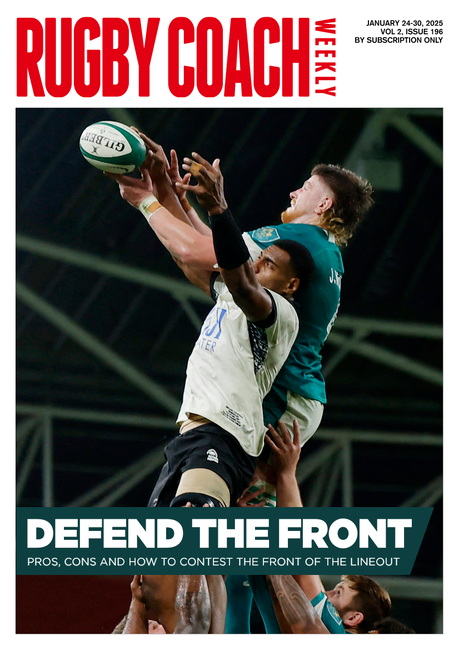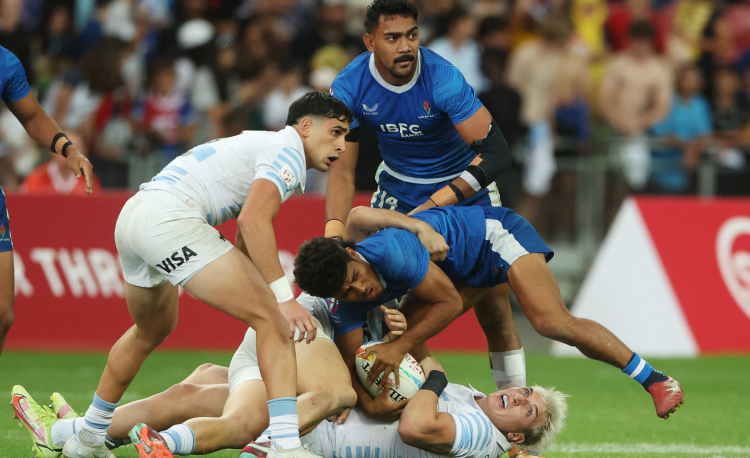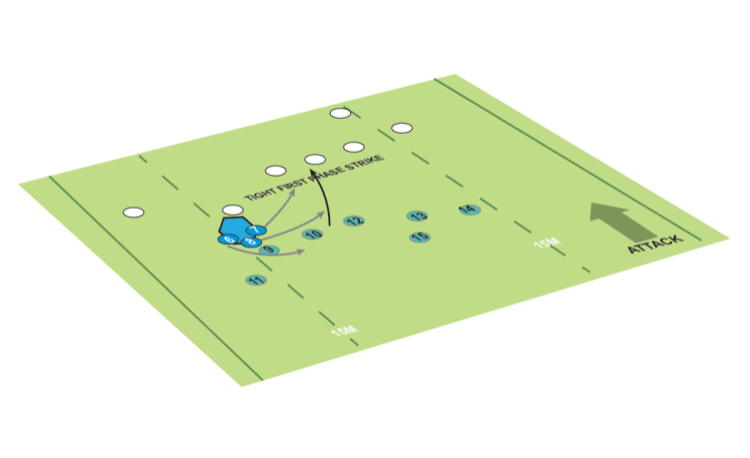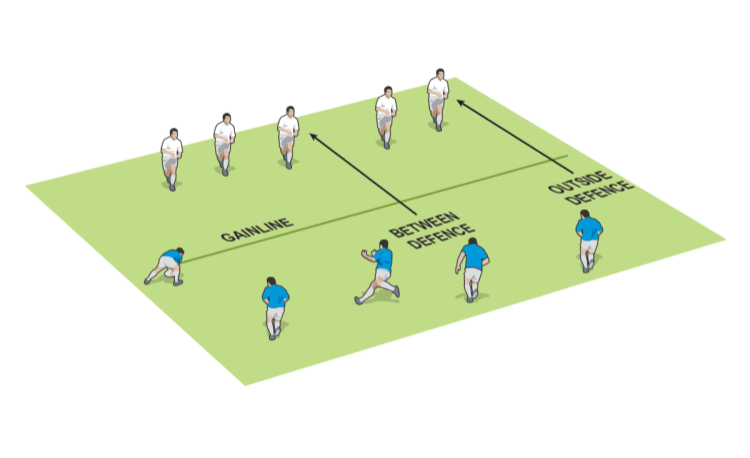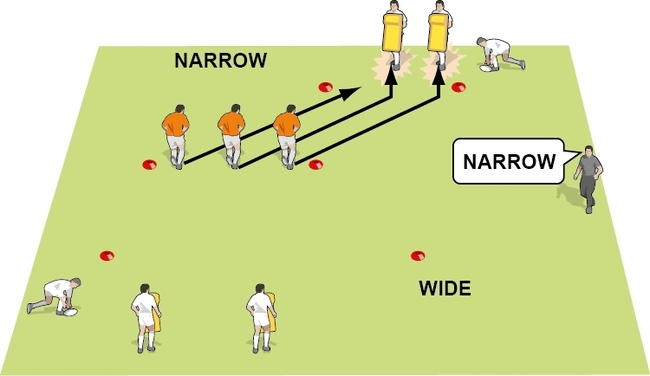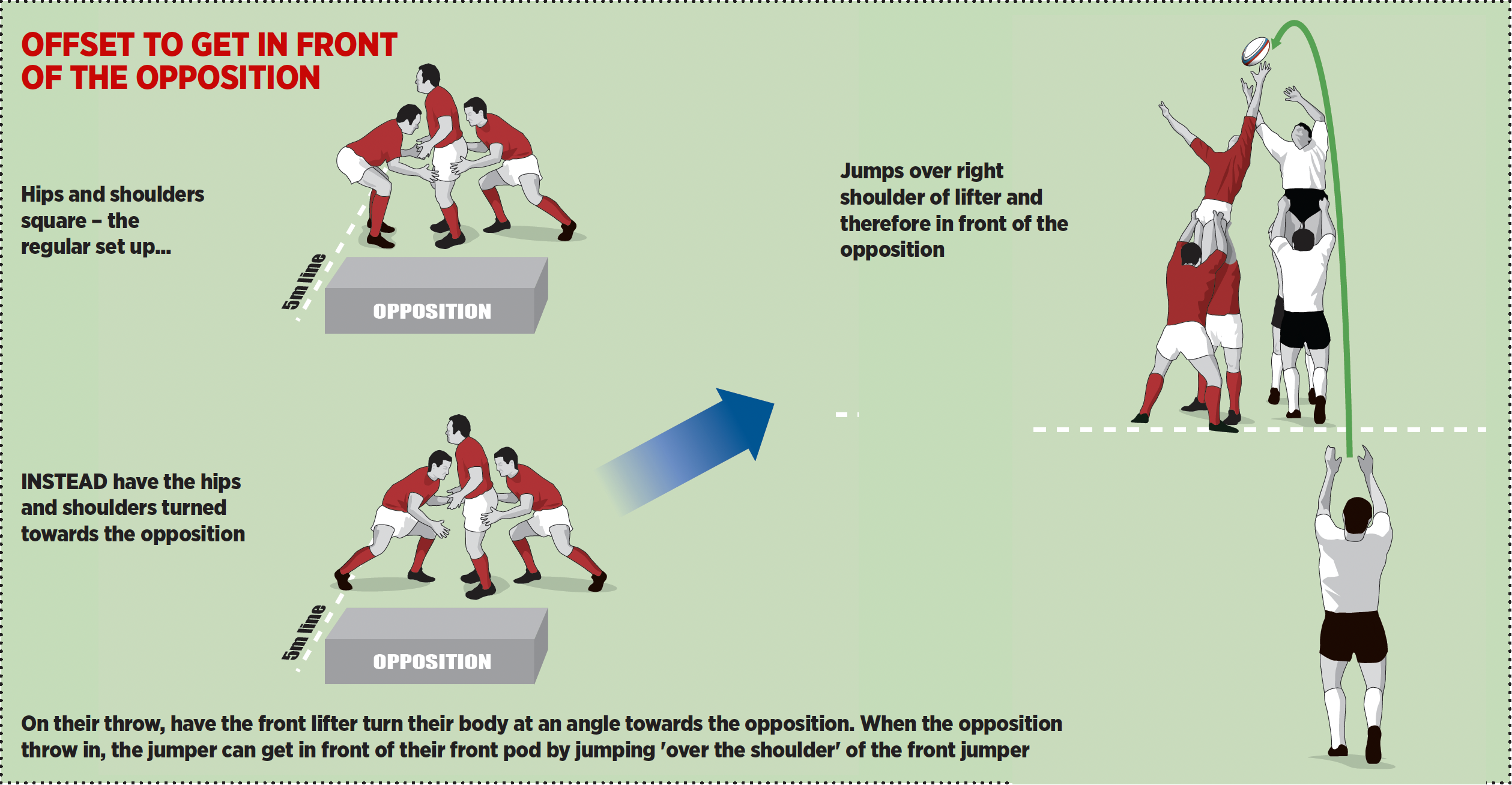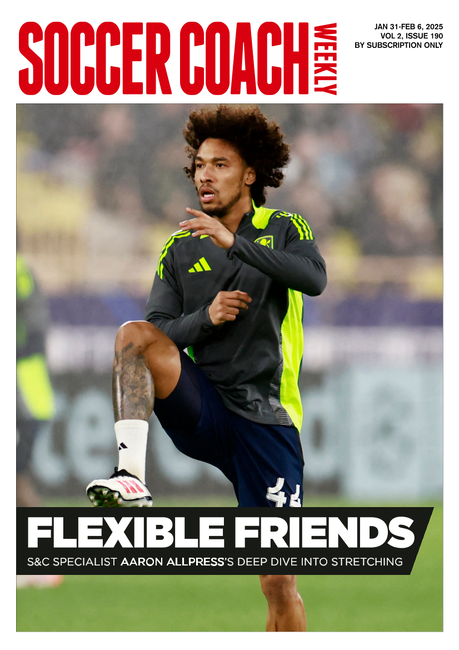Help 10 learn to control
Attack Tacticsby Dan Cottrell

How do you put your 10 in the right situations in training to allow them to feed their team mates at the right times with the right sorts of passes and plays?
The player who wears 10 is called variously, stand-off, fly-half, pivot, first five-eighth, as well as few less complimentary terms when they drop the ball or kick poorly.
I always think “pivot” best describes their role in the side because they are often in a position to significantly change the axis of attack. Their decision-making options are based on the opposition and the players around them. Those team mates need to give the pivot credible opportunities and make the 10 aware of them.
Your challenge is to create training scenarios where the players develop a good connection. The session, Increase your options for your 10, starts that process. I’ve found it particularly useful because it allows different players to take up that role in training.
I can remember running this exercise nearly 20 years ago and one particular winger putting himself forward as the pivot player. This created a dilemma for me at the time. Frankly, he wasn’t a natural pivot and nothing worked when he stood there - well, apart from him running at the defence.
One part of me wanted him to develop and learn. Probably to learn that he couldn’t play there. However, I needed my chosen pivot players to be there. I also recognise in hindsight that it was a chance for other players to put their case for being a pivot player. It was a school first XV and I certainly knew that some parents had been pushing their sons forward.
My solution was to run the session first as a chance for anyone to step up as a pivot. Then, next time, we would run the decision-making element at the end of the session for an intense ten minutes, but with just two chosen pivots.
A neat solution that nearly didn’t work though. One of the players who I wanted to play pivot was reticent to put themselves forward, so I had to firmly put them there. Under that pressure, they were worse than another player who did want to play in that position.
My rugby senses told me that I was right to go with the reticent player. I spoke to him before the next session and suggested that he could do a good job if called upon. When we ran the session again, he was better as one of the two “chosen ones”. Not a great deal better, but enough to ensure that we had an alternative.
The other player, who was keen to play pivot, performed well in the second team and eventually became the number one pivot when the first team 10 was injured.
The moral of the story is twofold. First, give players a chance, but don’t promise them anything. Second, your rugby sense might tell you one thing, but it’s the players who have to convince themselves they are good enough too.
Related Files
Vol-1-Issue-514-RCW-help-10-learn-to-control.pdfPDF, 785 KB
Newsletter Sign Up
Coaches Testimonials

Gerald Kearney, Downtown Las Vegas Soccer Club

Paul Butler, Florida, USA

Rick Shields, Springboro, USA

Tony Green, Pierrefonds Titans, Quebec, Canada
Subscribe Today
Be a more effective, more successful rugby coach
In a recent survey 89% of subscribers said Rugby Coach Weekly makes them more confident, 91% said Rugby Coach Weekly makes them a more effective coach and 93% said Rugby Coach Weekly makes them more inspired.
Get Weekly Inspiration
All the latest techniques and approaches
Rugby Coach Weekly offers proven and easy to use rugby drills, coaching sessions, practice plans, small-sided games, warm-ups, training tips and advice.
We've been at the cutting edge of rugby coaching since we launched in 2005, creating resources for the grassroots youth coach, following best practice from around the world and insights from the professional game.


